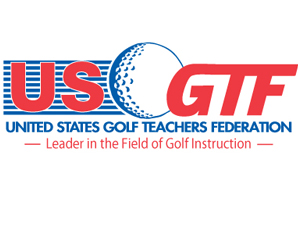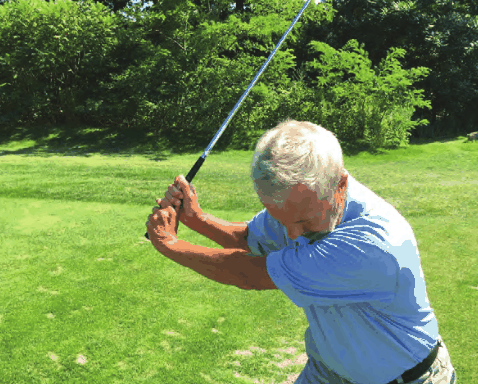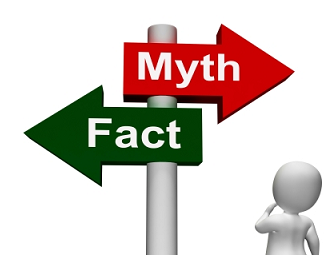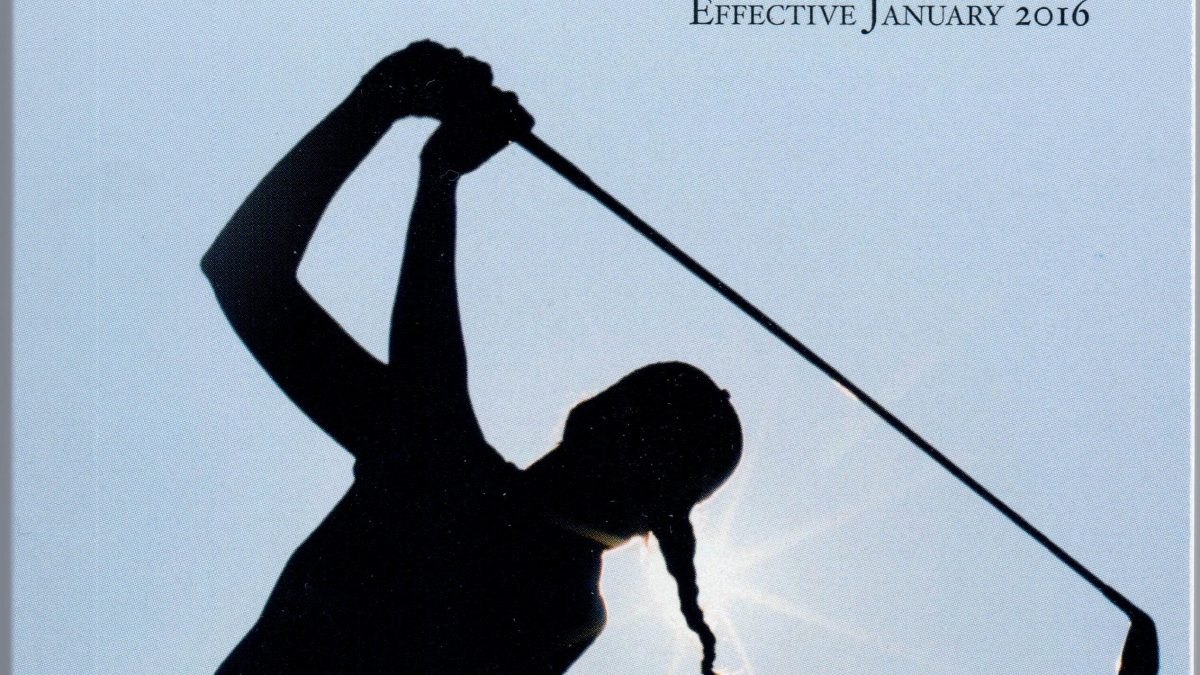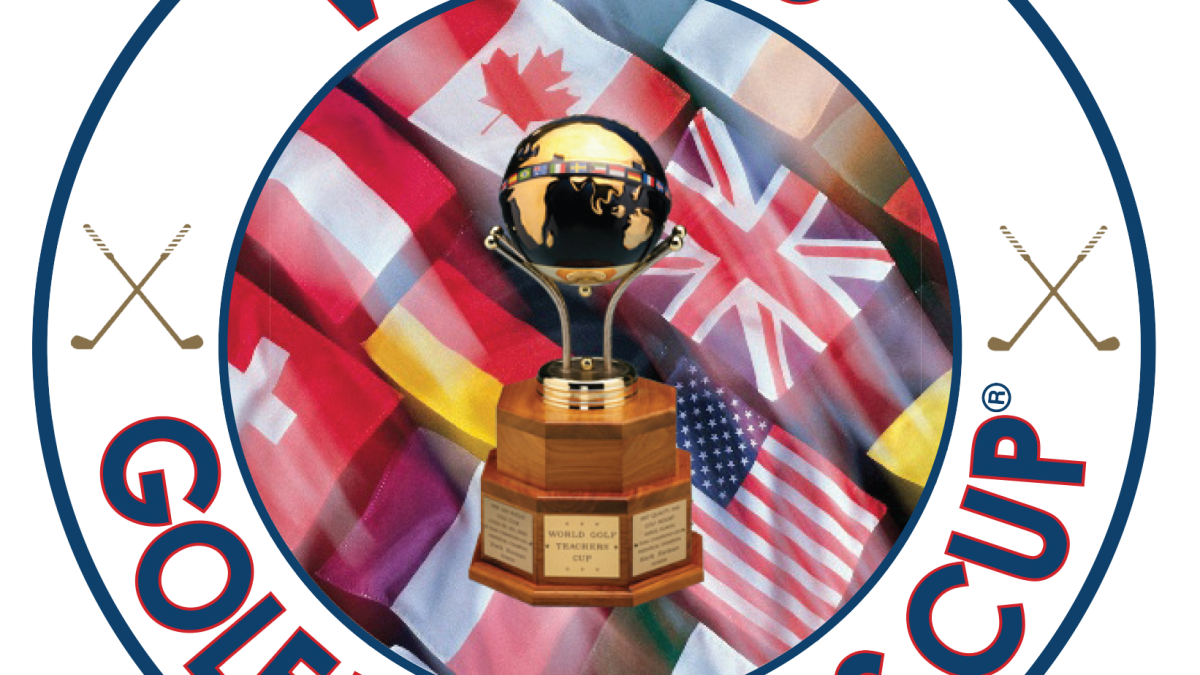Blog
HARVEY PENICK NOMINATIONS BEING TAKEN
HOTEL INFO FOR US/WORLD CUP SET
Transition: The First Move Down
Of all the aspects of teaching the swing, one stands out for its lack of attention…and ironically, most accomplished teachers consider it the most important part of the swing. It’s the transition, the change of directions from the backswing to the forward swing, and a lot of misinformation and trepidation in teaching it exists among the golf instruction world.
One reason for this may be the difficulty in teaching it. Performed correctly, it’s a highly athletic move and the basis of everything that happens from that moment on. Before the move can be taught, the golfer must be in the correct position to execute it; otherwise, the teacher will be teaching out of sequence. And let’s explain that concept before we go further.
Teaching out of sequence means addressing an aspect of the swing that happens after the true root cause of a problem. A simple example would be alignment. A golfer who is lined up with a too-closed stance would have to make some sort of compensating move in order for the ball to find its target, such as hitting a hook or coming over the top so the swing path is towards the intended target. A teacher who fails to change the stance and attempts to teach the student from this setup position will be working on the effects of the root cause, and is therefore teaching out of sequence.
Strictly speaking, the top of the backswing is a position within transition, but for teaching purposes, we will consider it as coming before transition. There are several aspects that must be fundamentally correct before teaching the transition can be done:
- A proper coil, with the lower body having responded to the upper body’s turn
- Weight (or pressure) primarily on the inside of the back foot
- Hips having turned, not swayed, with only a minimum of lateral motion allowed
- Lead foot on the ground or heel slightly raised; no thrusting of knee towards the trail leg
- Spine angle in or near original address position (provided it was correct to begin with)
- Swing on-plane, with lead arm on or near same angle as shaft plane at address*
- Clubface in a square position**
Let’s Put These Old Myths To Rest For Good
 What do the Loch Ness Monster, Bigfoot, and the importance of keeping your head down in golf all have in common? Of course, they are myths, seeming to have some elements of plausibility, but in the end have yet to be demonstrated as true.
Here we are, a number of years into the 21st century, and many golf myths that have been debunked are still taken as gospel by countless amateurs, and unfortunately many golf teachers, as well. In the teaching and coaching professions, it is our responsibility to base our instruction on information that has proven to be true and scientifically sound. Let’s take a look at some of the more prevalent myths that are still believed by many in the golf world.
EQUIPMENT
“Slow swing speeds don’t compress a ball as much as faster swing speeds.” Tests of different swing speeds show that even modest swing speeds compress the ball just about as much as tour swing speeds. It really doesn’t take much to compress a ball. The USGTF Technical Committee found that a ball imprint of ¼” (.6 cm) diameter was left on a putter face after striking a 10-foot (3-meter) putt.
“Distance balls travel farther than tour balls off the tee.” This was true back in the balata ballera, but not today. The fact is that all balls travel about the same off the driver because tour-level balls are engineered to not spin very much with low-lofted clubs. However, with the medium and short irons, distance balls will travel a little farther due to having less spin than tour level balls with these clubs.
“Shafts that are too stiff cause slicing.” If you put stiff shafts into an Iron Byron hitting machine and program it at slow swing speeds, the ball will still go straight. Conversely, flexible shafts hit by an Iron Byron at tour speeds will still result in straight shots. The key is that people are not machines, and individual reactions will vary with ill-fit shafts.
INSTRUCTION
“Keep your head down (also keep your head still).” This is probably the most-imparted bit of instruction in golf history. If you talk to any accomplished instructor, they will tell you that this myth is also one of the most destructive tips ever given. It results in a lack of dynamic action through the ball, among other maladies. Yet, it continues to be the number one mantra of amateur golfers to their friends worldwide. Golfers can feel their heads coming up, yes, but that’s the result of other factors. And amateurs also notice their friends raising up through impact, but again, the head staying down is not the root cause. As responsible teachers and coaches, we should never tell anyone to keep their head down (or still).
“To cure a hook, play the ball more back; to cure a slice, play the ball more forward.” This bit of advice was dispensed by a professional golfer on a Golf Channel show, but it’s 100 percent incorrect. Although it seems to make sense at first glance, a slicer who plays the ball more forward will now be swinging more outside-in through impact than before, resulting in a bigger slice. And someone who hooks, who plays the ball farther back, will now have a more exaggerated inside-out path through impact, likely promoting a more severe hook.
“Keep your left arm straight.” While it shouldn’t collapse on the backswing, the left arm does not need to be straight. There are many fine players who play with a bent left arm on the back-swing, including former World Golf Teachers Cup champion Ken Butler, who is still an excellent player today.
“Impact position should be the same as the setup position.” You don’t hear this one much anymore, but it still has some traction among some instructors.
RULES
We could probably write several pages alone on rules myths, but we’ll limit the discussion to a few of the most common.
“If you knock a leaf off a branch on a practice backswing, it’s an automatic penalty.” Not necessarily. The standard is if knocking off the leaf (or leaves) improves the area of intended swing. In many cases, it doesn’t; hence, no penalty.
“Holding onto the removed flagstick while tapping in a putt is a penalty.” This is perfectly legal, unless the player is using the flagstick as an aid of some sort (such as steadying oneself in high winds). But since this is almost never the case, this is not a penalty.
“You can’t change the brand or model of ball you’re using during a round.” This is true only if the committee invokes the “one-ball rule” as a local rule. Otherwise, it’s legal for a player to play a Bridgestone on one hole and a Callaway on the next.
“It’s illegal to practice putt after the hole is over in stroke play; in match play, it’s okay.” This is an extremely prevalent belief, but wrong. Under Rule 7-2a, players are permitted to practice putt on the green of the hole they just played in both stroke play and match play. However, the committee has the power to prohibit this in either form of competition.
MISCELLANEOUS
“The ball flies farther in dry air because humid air is heavier.” This is 100 percent false, and probably the most-believed myth in golf outside of keeping the head down. Humid air is actually lighter than dry air, because water vapor molecules weigh less than nitrogen and oxygen molecules, which make up 99 percent of the atmosphere. What’s true is the ball will fly farther at higher altitudes and also in warmer air. Barometric pressure also plays a small role: The lower the pressure, the lighter the air.
“The best way to practice is to hit the same shot with the same club over and over.” Motor learning research has debunked this method of practice, called blocked practice. More efficient is random practice, where a different club is used, or at the very least a different shot is hit, from repetition to repetition. However, there is some evidence that hitting 2-3 shots in a row the same way with the same club (known as random blocks) can be as effective as true random practice.
“Golf is hard.” It depends on what the person is trying to accomplish. Making the tour? Yes. Having fun? No. We might be slightly biased, but the Technical Committee believes that golf was, is, and always will be the greatest individual game man ever invented.
What do the Loch Ness Monster, Bigfoot, and the importance of keeping your head down in golf all have in common? Of course, they are myths, seeming to have some elements of plausibility, but in the end have yet to be demonstrated as true.
Here we are, a number of years into the 21st century, and many golf myths that have been debunked are still taken as gospel by countless amateurs, and unfortunately many golf teachers, as well. In the teaching and coaching professions, it is our responsibility to base our instruction on information that has proven to be true and scientifically sound. Let’s take a look at some of the more prevalent myths that are still believed by many in the golf world.
EQUIPMENT
“Slow swing speeds don’t compress a ball as much as faster swing speeds.” Tests of different swing speeds show that even modest swing speeds compress the ball just about as much as tour swing speeds. It really doesn’t take much to compress a ball. The USGTF Technical Committee found that a ball imprint of ¼” (.6 cm) diameter was left on a putter face after striking a 10-foot (3-meter) putt.
“Distance balls travel farther than tour balls off the tee.” This was true back in the balata ballera, but not today. The fact is that all balls travel about the same off the driver because tour-level balls are engineered to not spin very much with low-lofted clubs. However, with the medium and short irons, distance balls will travel a little farther due to having less spin than tour level balls with these clubs.
“Shafts that are too stiff cause slicing.” If you put stiff shafts into an Iron Byron hitting machine and program it at slow swing speeds, the ball will still go straight. Conversely, flexible shafts hit by an Iron Byron at tour speeds will still result in straight shots. The key is that people are not machines, and individual reactions will vary with ill-fit shafts.
INSTRUCTION
“Keep your head down (also keep your head still).” This is probably the most-imparted bit of instruction in golf history. If you talk to any accomplished instructor, they will tell you that this myth is also one of the most destructive tips ever given. It results in a lack of dynamic action through the ball, among other maladies. Yet, it continues to be the number one mantra of amateur golfers to their friends worldwide. Golfers can feel their heads coming up, yes, but that’s the result of other factors. And amateurs also notice their friends raising up through impact, but again, the head staying down is not the root cause. As responsible teachers and coaches, we should never tell anyone to keep their head down (or still).
“To cure a hook, play the ball more back; to cure a slice, play the ball more forward.” This bit of advice was dispensed by a professional golfer on a Golf Channel show, but it’s 100 percent incorrect. Although it seems to make sense at first glance, a slicer who plays the ball more forward will now be swinging more outside-in through impact than before, resulting in a bigger slice. And someone who hooks, who plays the ball farther back, will now have a more exaggerated inside-out path through impact, likely promoting a more severe hook.
“Keep your left arm straight.” While it shouldn’t collapse on the backswing, the left arm does not need to be straight. There are many fine players who play with a bent left arm on the back-swing, including former World Golf Teachers Cup champion Ken Butler, who is still an excellent player today.
“Impact position should be the same as the setup position.” You don’t hear this one much anymore, but it still has some traction among some instructors.
RULES
We could probably write several pages alone on rules myths, but we’ll limit the discussion to a few of the most common.
“If you knock a leaf off a branch on a practice backswing, it’s an automatic penalty.” Not necessarily. The standard is if knocking off the leaf (or leaves) improves the area of intended swing. In many cases, it doesn’t; hence, no penalty.
“Holding onto the removed flagstick while tapping in a putt is a penalty.” This is perfectly legal, unless the player is using the flagstick as an aid of some sort (such as steadying oneself in high winds). But since this is almost never the case, this is not a penalty.
“You can’t change the brand or model of ball you’re using during a round.” This is true only if the committee invokes the “one-ball rule” as a local rule. Otherwise, it’s legal for a player to play a Bridgestone on one hole and a Callaway on the next.
“It’s illegal to practice putt after the hole is over in stroke play; in match play, it’s okay.” This is an extremely prevalent belief, but wrong. Under Rule 7-2a, players are permitted to practice putt on the green of the hole they just played in both stroke play and match play. However, the committee has the power to prohibit this in either form of competition.
MISCELLANEOUS
“The ball flies farther in dry air because humid air is heavier.” This is 100 percent false, and probably the most-believed myth in golf outside of keeping the head down. Humid air is actually lighter than dry air, because water vapor molecules weigh less than nitrogen and oxygen molecules, which make up 99 percent of the atmosphere. What’s true is the ball will fly farther at higher altitudes and also in warmer air. Barometric pressure also plays a small role: The lower the pressure, the lighter the air.
“The best way to practice is to hit the same shot with the same club over and over.” Motor learning research has debunked this method of practice, called blocked practice. More efficient is random practice, where a different club is used, or at the very least a different shot is hit, from repetition to repetition. However, there is some evidence that hitting 2-3 shots in a row the same way with the same club (known as random blocks) can be as effective as true random practice.
“Golf is hard.” It depends on what the person is trying to accomplish. Making the tour? Yes. Having fun? No. We might be slightly biased, but the Technical Committee believes that golf was, is, and always will be the greatest individual game man ever invented.

